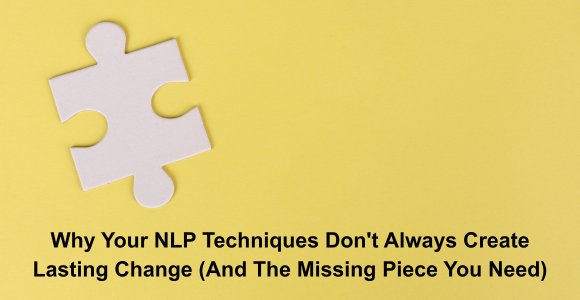
You’ve mastered the Meta Model. You can spot submodalities from across the room. Your anchoring technique is flawless, and you can reframe practically anything.
But here’s the uncomfortable truth every NLP practitioner eventually faces: Sometimes the changes don’t stick. Sometimes that perfectly executed swish pattern works brilliantly in the session, only to have your client return weeks later with the same issue.
Sound familiar?
It’s not your technique that’s the problem. It’s that you’re only working with half the equation.
The Conscious-Unconscious Gap NLP Can’t Always Bridge
As an NLP practitioner, you already understand the conscious-unconscious distinction. After all, the Milton Model came directly from modeling Milton Erickson’s hypnotic language patterns.
But here’s what your NLP training might not have emphasized: There’s a massive difference between using unconscious language patterns consciously (like when you deliberately use Milton Model patterns) and actually bypassing the conscious mind altogether to work directly with the unconscious.
Here’s why that matters: The human body sends 11 million bits per second to the brain for processing, yet the conscious mind seems to be able to process only 50 bits per second. And while it takes approximately 500-600 milliseconds for an experience to register in conscious awareness, the amygdala can react to a potential threat in less than 50 milliseconds.
Think about what this means for your NLP work. When you’re using the Meta Model to challenge deletions, distortions, and generalizations, you’re working at that 50 bits per second conscious level.
But the client’s unconscious (processing at 11 million bits per second) has already formed its response before their conscious mind even knows what hit it.
Why Even Perfectly Executed NLP Techniques Sometimes Fall Flat
Picture this scenario: You’ve just done a flawless fast phobia cure. The client feels great in the session. They can think about their phobia without the usual response. But three weeks later, they’re back with the same issue.
Or you’ve anchored a powerful resource state, stacked it perfectly, and tested it successfully. Yet when your client needs it most in the real world, the anchor doesn’t fire.
What’s happening?
The problem is that NLP often works at the level of structure and strategy – the conscious organization of experience. But habits, emotions, and deeply ingrained patterns live in the unconscious, specifically in the basal ganglia.
Research on the basal ganglia reveals that fully acquired habits are performed almost automatically, virtually non-consciously, allowing attention to be focused elsewhere. These habits literally bypass conscious control.
This is why your perfectly calibrated submodality shift might not stick. You’re changing the conscious representation without addressing the unconscious neural pathways in the basal ganglia that automatically trigger the old pattern.
The Milton Model Paradox: When Knowing Hypnotic Language Isn’t Enough
Here’s something that might sting a bit: Just because you studied the Milton Model doesn’t mean you’re doing hypnosis.
Yes, Milton Erickson’s language patterns were modeled for NLP. Yes, you can use embedded commands, presuppositions, and ambiguity. But there’s a crucial difference between using hypnotic language patterns consciously (as most NLP practitioners do) and actually inducing a hypnotic state where those patterns can bypass the critical faculty.
Think about it: When you’re consciously crafting Milton Model patterns, you’re working at the conscious level – both yours and your client’s. Your client’s critical faculty is still active, still filtering, still analyzing. They might appreciate your elegant language, but the suggestions aren’t necessarily reaching the unconscious directly.
Real hypnosis involves what’s called the “critical faculty bypass.”
This is when the analytical, judgmental part of the conscious mind temporarily steps aside, allowing direct communication with the unconscious.
Dave Elman, one of hypnosis’s most influential pioneers, defined it clearly: “Hypnosis is a state of mind in which the critical faculty of the human is bypassed, and selective thinking established”.
The critical faculty is that analytical part of the mind that judges, evaluates, and filters information. When you’re using NLP techniques at the conscious level, this critical faculty is still active.
But in true hypnosis, selective thinking bypasses the critical faculty of the mind, allowing suggestions to reach the unconscious directly.
The Missing Piece: Depth and Receptivity
Here’s what separates NLP from hypnosis, and why adding hypnosis to your NLP practice changes everything:
NLP works with the structure of experience. You’re changing submodalities, shifting anchors, reframing meanings. It’s powerful, but it’s still working at the level of conscious organization.
Hypnosis creates a state of heightened receptivity. It’s not just about using the right language patterns – it’s about creating a specific neurological state where the unconscious becomes directly accessible.
Think of it this way:
- NLP is like having the perfect key (technique)
- Hypnosis is like having the door already open (state)
When you combine them? You’re not just changing the structure of experience; you’re implanting that change at the deepest level of unconscious processing.
Three Ways Hypnosis Amplifies Your NLP Work
1. Anchoring Becomes Automatic Installation
As an NLP practitioner, you know how to set anchors. But have you noticed how some anchors fade over time, especially under stress?
When you set an anchor in a hypnotic state, you’re not just creating a stimulus-response pattern at the conscious level. You’re installing it directly into the basal ganglia – the same place where automatic habits live. The anchor becomes part of the unconscious response system, firing automatically without conscious effort.
2. Reframes Become Unconscious Truths
The Meta Model and reframing are brilliant for changing how someone thinks about an experience. But thinking and believing are two different things.
In hypnosis, when you deliver a reframe, you’re not presenting it to the critical faculty for evaluation. You’re planting it directly in the unconscious as an accepted truth. The person doesn’t just understand the new perspective – they embody it at a cellular level.
3. Timeline Work Becomes Emotional Reality
NLP’s Timeline Therapy is powerful for changing how we code time and memory. But when you add hypnotic depth, something magical happens.
Instead of consciously reimagining the past or future, the unconscious actually re-experiences it. The emotional brain can’t tell the difference between a vividly imagined hypnotic experience and reality. Changes made in this state literally rewire the emotional responses at their source.
The Practical Bridge: How to Start Adding Hypnosis to Your NLP
You don’t need to abandon your NLP training. You just need to add depth. Here’s how to begin:
1. Learn to Recognize Natural Trance States
Your clients are already going into trance during NLP work. Watch for:
- The defocused gaze during Timeline work
- The absorbed attention during submodality shifts
- The internal processing during parts integration
These are doorways. Learn to deepen them instead of bringing the client back to full conscious awareness.
(You can find a detailed guide on how to pick up on 14 signs someone is in trance here.)
2. Add Formal Trance to Your Sessions
Before doing change work, spend 5-10 minutes inducing a proper hypnotic state:
- Use progressive relaxation to quiet the conscious mind
- Employ fractionation (repeatedly taking them in and out of trance) to deepen the state
- Test for trance indicators (arm catalepsy, time distortion, amnesia)
Then do your NLP work. The same techniques, but now delivered directly to the unconscious.
3. Master the Art of Hypnotic Language
Yes, you know the Milton Model. But there’s a difference between using Milton patterns and speaking hypnotically. True hypnotic language involves:
- Rhythm and pacing that entrains brainwaves
- Tonal shifts that speak to different levels of consciousness
- Embedded suggestions that bypass conscious awareness completely
Your Evolution as a Change Agent
You became an NLP practitioner because you wanted to help people change. You learned powerful techniques, sophisticated models, and elegant patterns.
But if you’ve hit the ceiling of what NLP alone can do…
If you’ve noticed that some changes don’t stick as deeply as you’d like…
If you sense there’s a missing piece that would make everything click…
That missing piece is hypnosis. Not as a replacement for NLP, but as the depth that makes NLP truly transformational.
The conscious mind might understand change. But the unconscious mind becomes the change.
And when you can speak directly to the unconscious – not just with patterns, but by actually inducing the state where the unconscious is fully receptive – that’s when lasting transformation happens.
Ready to bridge the gap?
Discover how to seamlessly integrate hypnosis into your existing NLP practice in this in-depth new Guide on How to Add Hypnosis To Your NLP Practice To Create Deep & Lasting Change.You’ll find out:
- 5 real-world examples of how hypnosis enhances classic NLP techniques like the Swish Pattern, Anchoring, Meta Model, and more
- Ready-to-use hypnotic language patterns that make suggestions land deeper, without sounding “hypnotic”
- How to seamlessly blend hypnosis into your NLP work without formal inductions
- A practical 5-step framework to get started right away even if you’ve never studied hypnosis before

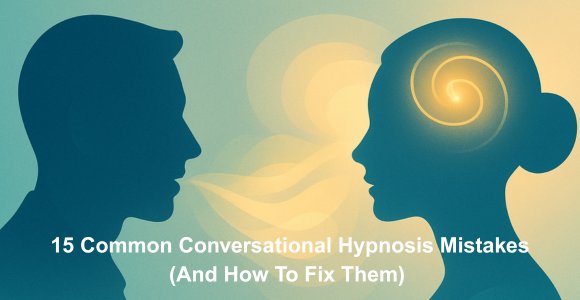
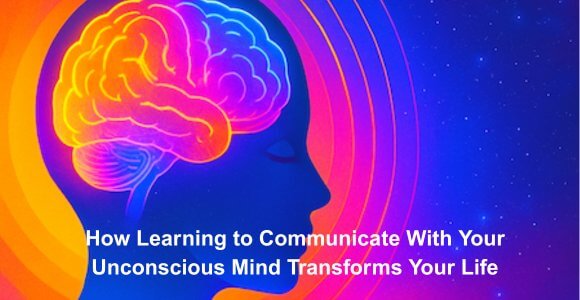


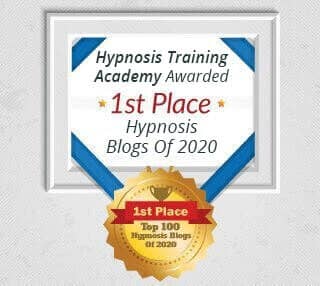
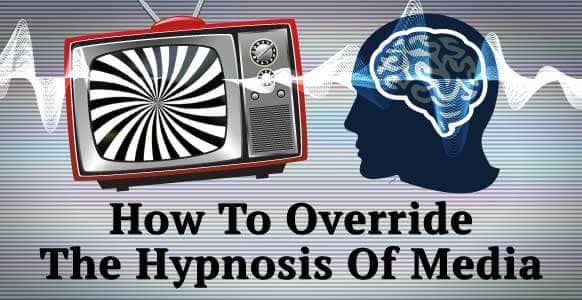

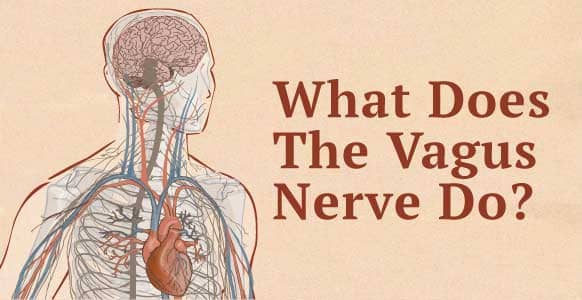
![Yogic Breathing For Hypnosis: 3 Easy Techniques To Ground & Relax Your Clients Before Inducing A Hypnotic Trance [Includes Infographic] Yogic Breathing For Hypnosis: 3 Easy Techniques To Ground & Relax Your Clients Before Inducing A Hypnotic Trance [Includes Infographic]](https://hypnosistrainingacademy.com/wp-content/uploads/2019/05/yogic-breathing-for-hypnosis.jpg)

![[ADVANCED GUIDE] How To Master Hypnotic Regression Therapy - Part I: Essential Principles To Profoundly Transform Your Subject’s Emotional Trauma [ADVANCED GUIDE] How To Master Hypnotic Regression Therapy - Part I: Essential Principles To Profoundly Transform Your Subject’s Emotional Trauma](https://hypnosistrainingacademy.com/wp-content/uploads/2016/09/hypnotic-regression-therapy-essential-principles.jpg)
